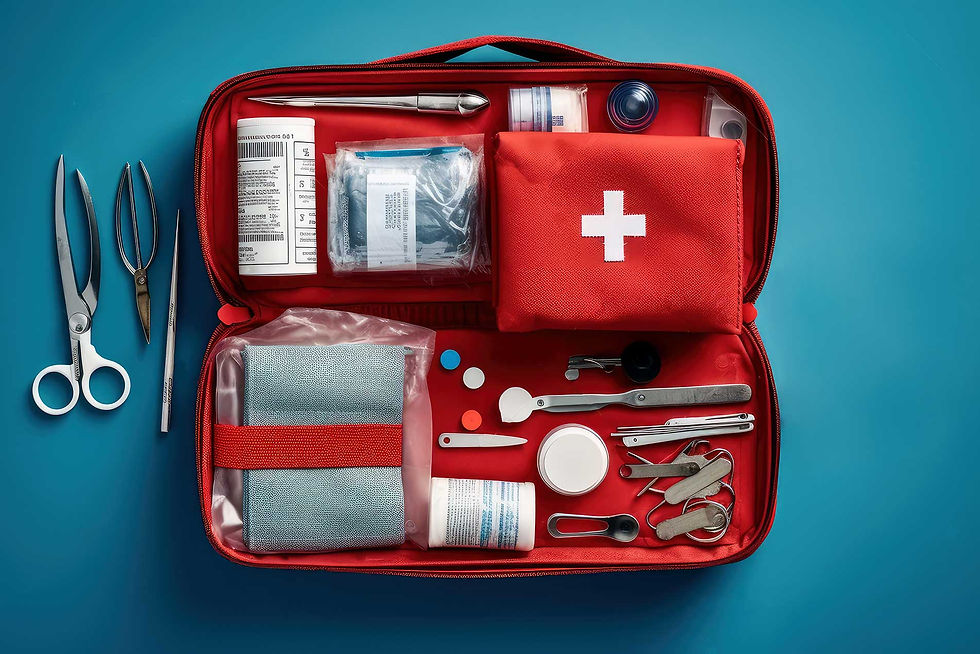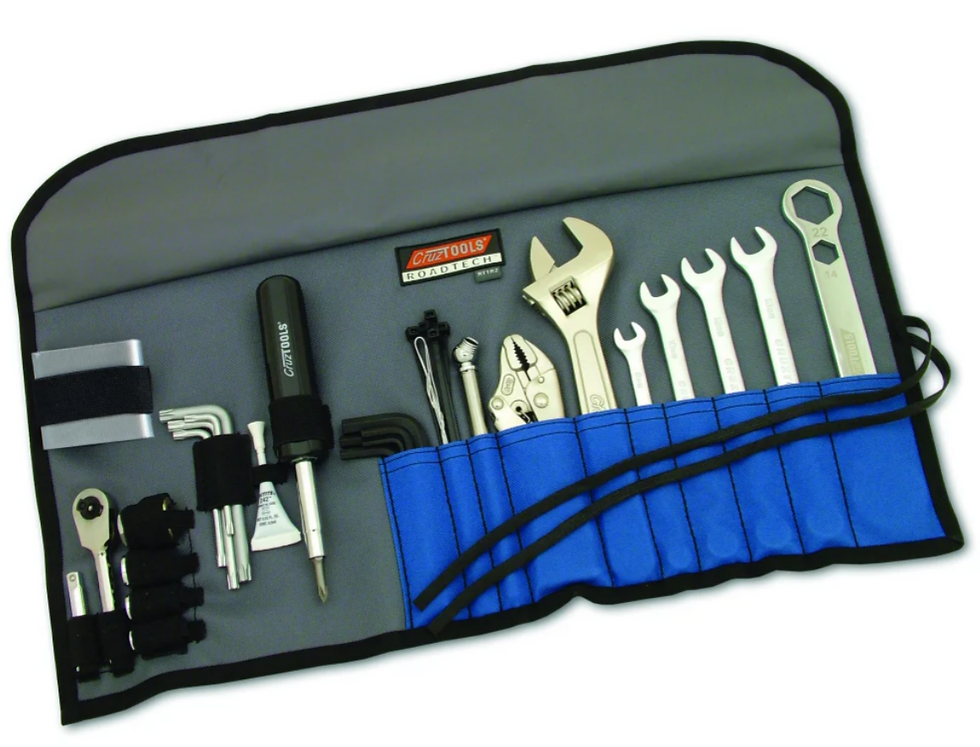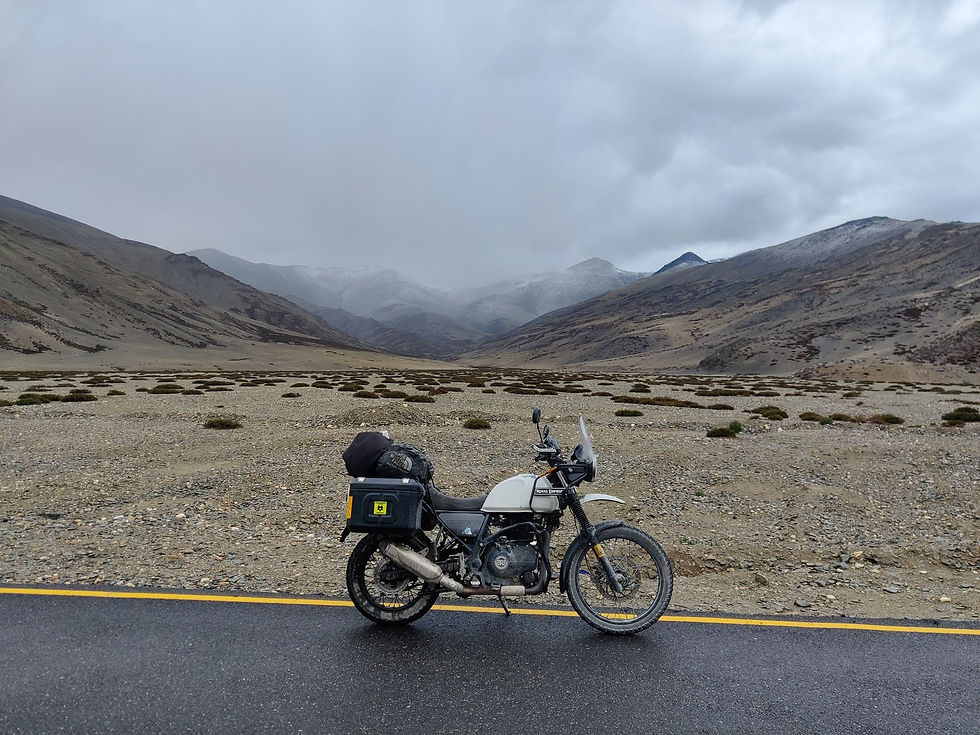Mastering Solo Motorcycle Travel: A Comprehensive Guide to Preparation, Safety, and Adventure
- Twisted Trails Adventures
- Apr 14, 2024
- 6 min read
Introduction:
Solo motorcycle travel epitomizes freedom, exploration, and adventure. The open road beckons, promising exhilarating experiences and endless possibilities for discovery. Yet, embarking on a solo journey requires thorough preparation, keen attention to safety, and a mindset attuned to both adventure and caution. In this extensive guide, we'll delve into the essentials of preparing for your trip, dos and don'ts on the road, safety precautions, essential items to carry, and the importance of motorcycle maintenance.
Preparing for the Trip:
Plan Your Route: The foundation of a successful solo motorcycle journey lies in meticulous planning. Research your route, noting fuel stations, accommodations, attractions, and potential road hazards. Consider alternate routes in case of unexpected closures or delays.
Check Weather Conditions: Weather can be unpredictable, significantly impacting your riding experience. Stay updated on forecasts for your intended route and pack appropriate gear for varying conditions, including rain gear, cold-weather layers, and sunscreen for sunny days.
Inspect Your Motorcycle: Before embarking on your journey, conduct a comprehensive inspection of your motorcycle. Check tire pressure, tread wear, brakes, lights, fluids, and overall mechanical condition. Address any issues promptly to ensure a safe and smooth ride.
Pack Light, Pack Smart: Space is limited on a motorcycle, so prioritize essentials when packing. Clothing layers, rain gear, first-aid kit, tool kit, spare parts, emergency supplies, and personal items should be packed efficiently to minimize bulk and maximize space.
Emergency Contacts: Carry a list of emergency contacts, including family, friends, roadside assistance services, and local authorities along your route. Ensure your phone is fully charged and easily accessible in case of emergencies.
Dos and Don'ts on the Road:
Do Ride Defensively: Defensive riding is paramount to your safety on the road. Anticipate potential hazards, stay alert, and maintain a safe following distance from other vehicles. Avoid distractions and focus on the road ahead at all times.
Don't Ride Beyond Your Limits: Know your riding abilities and refrain from taking unnecessary risks. Avoid riding in adverse weather conditions or on unfamiliar terrain that exceeds your skill level. Your safety should always take precedence over bravado.
Do Stay Hydrated and Energized: Long hours in the saddle can be physically demanding. Stay hydrated by drinking plenty of water and take regular breaks to stretch and rest. Pack nutritious snacks to maintain energy levels and avoid fatigue.
Don't Ignore Traffic Laws: Adhere to speed limits, traffic signals, and road signs at all times. Avoid reckless maneuvers or aggressive riding behavior that could endanger yourself and others on the road.
Do Plan Your Rest Stops: Incorporate regular rest stops into your itinerary to prevent fatigue and maintain focus. Use breaks to stretch, hydrate, and appreciate the scenery. Listen to your body and prioritize rest when needed.
Safety Precautions:
Wear Protective Gear: Never compromise on safety gear. Invest in a DOT/ECE/ISI-approved helmet, protective jacket, pants, gloves, and sturdy boots. High-visibility clothing enhances visibility to other motorists, especially in low-light conditions.
Stay Connected: Maintain communication with loved ones throughout your journey. Check in regularly via phone, text, or social media to reassure them of your well-being. Share your itinerary and expected arrival times for added peace of mind.
Mind Your Surroundings: Be vigilant of your surroundings, including other vehicles, pedestrians, wildlife, and road conditions. Scan the road ahead for obstacles, debris, and potential hazards. Adjust your speed and riding style accordingly.
Plan for Emergencies: Prepare for unforeseen circumstances by carrying essential emergency supplies. A basic toolkit, first-aid kit, flashlight, multi-tool, spare cash, and a fully charged power bank can be invaluable in times of need.
Trust Your Instincts: If something feels off or unsafe, trust your instincts and take appropriate action. Whether it's altering your route, seeking shelter from inclement weather, or stopping to address a mechanical issue, prioritize your safety above all else.
Things to Carry:
Basic Toolkit: Carry a compact toolkit containing essentials such as wrenches, screwdrivers, pliers, and tire repair kits. Familiarize yourself with basic repairs to handle minor issues on the road. If you are planning to ride to any remote regions where there are no Motorcycle service centers or workshops , then check the list of items to carry in the toolkit in the next section.
First-Aid Kit: Pack a comprehensive first-aid kit to address injuries or medical emergencies. Include bandages, antiseptic wipes, pain relievers, adhesive tape, and any personal medications.
Emergency Supplies: Prepare for unforeseen circumstances with emergency supplies such as a flashlight, multi-tool, duct tape, spare cash in multiple denominations, and a fully charged power bank for your electronic devices.
Navigation Tools: Equip yourself with reliable navigation tools, including GPS devices, maps, and compasses. Invest in waterproof storage solutions to protect electronic gadgets from moisture.
Personal Identification: Carry identification documents such as your driver's license, motorcycle registration, insurance papers, and emergency contact information. Store these documents securely in a waterproof pouch or bag.

Motorcycle Maintenance:
Regular Inspections: Schedule regular maintenance inspections for your motorcycle to ensure it's in optimal condition for your journey. Check tire pressure, tread wear, brakes, lights, fluids, and overall mechanical integrity.
Fluid Levels: Monitor fluid levels, including engine oil, coolant, brake fluid, and transmission fluid. Top up or replace fluids as needed to maintain peak performance and prevent mechanical issues on the road.
Tire Care: Check tire pressure and tread wear regularly, especially before long rides. Underinflated tires can affect handling and fuel efficiency, while worn-out tires compromise traction and safety.
Chain Maintenance: Keep the drive chain clean and properly lubricated to prevent premature wear and ensure smooth operation. Adjust chain tension as needed and inspect for signs of damage or wear.
Brake Checks: Test your brakes regularly to ensure they're responsive and effective. Replace brake pads or discs as needed and address any issues with brake fluid leakage or sponginess immediately.
Toolkit for longer trips:
When preparing for a motorcycle trip, having a well-equipped toolkit can be essential for handling unexpected mechanical issues or repairs on the road. Here's a list of items to consider including in your motorcycle toolkit:
Multi-tool: A compact multi-tool with various functions such as pliers, screwdrivers, and wrenches can be incredibly versatile for minor repairs and adjustments.
Adjustable Wrench: A small adjustable wrench can be useful for tightening or loosening nuts and bolts of different sizes on your motorcycle.
Hex Key Set (Allen Keys): Include a set of hex keys in various sizes to fit bolts and screws commonly found on motorcycles.
Socket Set: A small socket set with sockets in metric sizes can help you tackle more significant repairs or adjustments, such as removing wheels or tightening bolts.
Tire Repair Kit: Carry a tire repair kit that includes patches, glue, and tire plugs to address punctures or leaks in your motorcycle tires. A portable tire inflator or CO2 cartridges can also be helpful for reinflating tires.
Tire Pressure Gauge: A compact tire pressure gauge allows you to monitor tire pressure and ensure optimal inflation levels for safe and efficient riding.
Chain Tool: If your motorcycle has a chain drive, a chain tool can be invaluable for making adjustments, removing links, or repairing a broken chain.
Chain Lube: Keep a small bottle of chain lubricant to maintain proper chain tension and reduce friction and wear during your trip.
Spark Plug Socket: A spark plug socket specifically sized for your motorcycle's spark plugs enables you to quickly remove and replace spark plugs if needed.
Electrical Tape: Electrical tape can be used to insulate wires, secure loose connections, or temporarily fix electrical issues on your motorcycle.
Fuses: Carry spare fuses of various sizes to replace blown fuses in your motorcycle's electrical system in case of a malfunction.
Duct Tape: Duct tape is a versatile adhesive tape that can temporarily patch or fix a wide range of issues, from securing loose parts to sealing minor leaks.
Zip Ties: Keep a handful of zip ties in your toolkit for securing loose cables, wires, or other components on your motorcycle.
Safety Wire: Safety wire can be used to secure critical components or prevent fasteners from loosening due to vibration during your ride.
Chain Lubricant: A small can of chain lubricant helps maintain the health and longevity of your motorcycle's chain, especially during long rides.
Owner's Manual: Although not technically a tool, carrying your motorcycle's owner's manual can provide valuable guidance on maintenance procedures or troubleshooting issues on the road.
Emergency Contact Information: Include a list of emergency contacts, including roadside assistance services, motorcycle repair shops, and trusted friends or family members who can offer assistance if needed.
Compact Flashlight: A small, durable flashlight can be handy for inspecting your motorcycle in low-light conditions or performing repairs after dark.
Portable Jump Starter: Consider carrying a portable jump starter with built-in USB ports to jump-start your motorcycle battery or charge electronic devices in case of a dead battery.
Small Container of Engine Oil: Carrying a small container of engine oil allows you to top up oil levels if needed during your trip, ensuring optimal engine performance and longevity.

Remember to tailor your toolkit to your specific motorcycle model and the type of riding you'll be doing. Regularly inspect and replenish your toolkit to ensure you're always prepared for any unexpected challenges that may arise during your motorcycle travels.
Conclusion:
Solo motorcycle travel offers a unique opportunity for adventure, self-discovery, and personal growth. By adhering to these tips for preparation, safety, and maintenance, you can embark on unforgettable journeys with confidence and peace of mind. Remember to prioritize safety, stay prepared for contingencies, and embrace the exhilarating experience of solo motorcycle travel. Whether you're traversing winding mountain roads, cruising along coastal highways, or exploring remote landscapes, the open road awaits your discovery. So gear up, rev your engine, and set forth on the adventure of a lifetime. Safe travels!









Comments